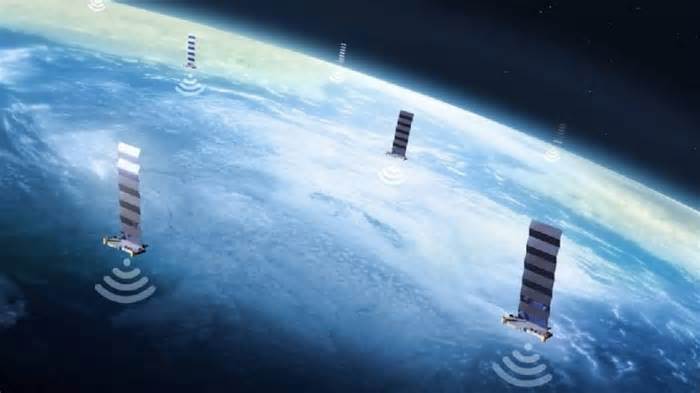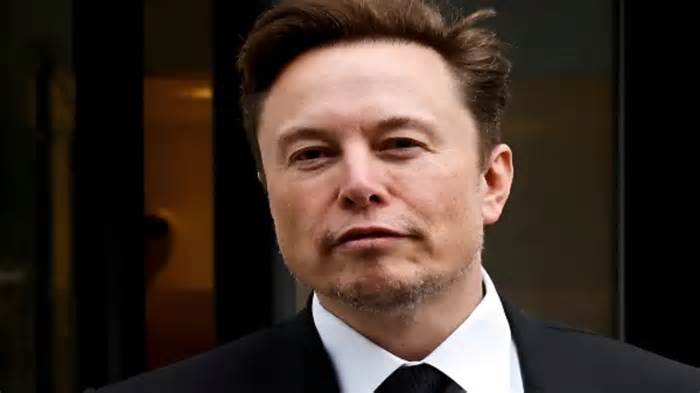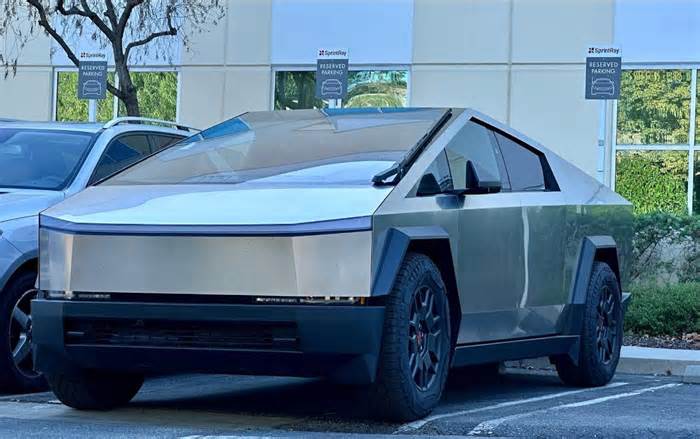
Astronaut released from hospital after “medical issue” upon return from space
- by Ars Technica
- Oct 25, 2024
- 0 Comments
- 0 Likes Flag 0 Of 5

Minimize to nav
NASA said Saturday that an astronaut who was hospitalized after returning from space the day before has been released and is in "good health." The agency did not provide any more details on the matter, citing medical privacy protections.
The astronaut was one of four crew members who returned from a 235-day mission in low-Earth orbit with a predawn splashdown Friday. The four-person crew splashed down inside SpaceX's Crew Dragon Endeavour spacecraft at 3:29 am EDT (07:29 UTC) in the Gulf of Mexico south of Pensacola, Florida.
Commander Matthew Dominick, pilot Michael Barratt, mission specialist Jeanette Epps, and Russian cosmonaut
Alexander Grebenkin were inside SpaceX's Dragon spacecraft for reentry and splashdown.
NASA said one of its astronauts "experienced a medical issue" after the splashdown, and all four crew members were flown to Ascension Sacred Heart Pensacola for medical evaluation.
Three of the crew members were released later Friday morning and departed Pensacola on a NASA business jet to fly back to Houston, according to NASA. The unidentified astronaut remained overnight at Ascension in "stable condition and under observation as a precautionary measure," a NASA spokesperson said in a statement Friday.
The astronaut was released Saturday in "good health" and returned to Houston, "where they will resume normal post-flight reconditioning with other crew members," NASA said. "To protect the crew member’s medical privacy, specific details on the individual’s condition and identity will not be shared."
Roscosmos cosmonaut Alexander Grebenkin, left, NASA astronauts Michael Barratt, second from left, Matthew Dominick, second from right, and Jeanette Epps, right are seen inside the SpaceX Dragon Endeavour spacecraft shortly after splashdown Friday morning.
Credit:
NASA/Joel Kowsky
Roscosmos cosmonaut Alexander Grebenkin, left, NASA astronauts Michael Barratt, second from left, Matthew Dominick, second from right, and Jeanette Epps, right are seen inside the SpaceX Dragon Endeavour spacecraft shortly after splashdown Friday morning.
Credit:
NASA/Joel Kowsky
This mission, named Crew-8, was SpaceX's eighth operational crew rotation flight to the space station under a multibillion-dollar commercial crew contract with NASA. This was the first flight to space for Dominick, Epps, and
Grebenkin, and the third space mission for Barratt.
NASA extended their stay at the International Space Station earlier this year to accommodate schedule changes caused by the troubled test flight of Boeing's Starliner spacecraft, then to wait for better weather conditions in SpaceX's recovery zones near Florida.
Roscosmos, the Russian space agency, released a photo of
Grebenkin standing in Pensacola a few hours after splashdown. "After the space mission and splashdown, cosmonaut Alexander Grebenkin feels great!" Roscosmos posted on its Telegram channel.
Adapting to Earth
This is not the first time an astronaut has been hospitalized after returning to Earth, but it is uncommon. South Korean astronaut
Yi So-yeon was hospitalized for back pain after experiencing higher-than-expected g-forces during reentry in a Russian Soyuz spacecraft in 2008.
Three NASA astronauts were hospitalized in Hawaii after splashing down at the end of the Apollo-Soyuz Test Project mission in 1975. The astronauts suffered lung irritation after breathing in toxic vapors from the Apollo spacecraft's thrusters in the final moments before splashdown.
The performance of the Dragon spacecraft was normal during its reentry and splashdown early Friday. NASA and SpaceX broadcast live imagery of the splashdown, and there were no obvious signs of anything amiss. The capsule reentered the atmosphere on a northeasterly path across Mexico and the Gulf, then deployed four main parachutes to slow itself for an on-target splashdown.
"What an incredible ride," Dominick radioed SpaceX Mission Control moments after arriving back on Earth.
SpaceX teams checked the spacecraft for toxic propellant leaks, then used a crane to lift the capsule onto a recovery vessel before opening Dragon's hatch to help the four crew members out of their seats. All four appeared healthy and in good spirits, although a bit wobbly, as they readjusted to Earth's gravity after nearly eight months in orbit.
Following standard protocol, NASA and SpaceX personnel assisted each crew member onto a stretcher and wheeled them inside the recovery ship for initial post-flight medical evaluations. Normally, once medical personnel complete their preliminary assessment, crews are flown to shore on a helicopter, then board a NASA airplane for the flight back to Houston.
Instead, the Crew-8 astronauts were taken to the hospital Friday morning. "During routine medical assessments on the recovery ship, the additional evaluation of the crew members was requested out of an abundance of caution," NASA said.
NASA has firm rules on medical privacy, and the agency said Saturday it will not release any more details. There was no indication in NASA's statements whether the astronaut's medical issue was related to their readapting to gravity or something else.
Cosmonaut Alexander Grebenkin and astronauts Michael Barratt, Matthew Dominick, and Jeanette Epps pose with a Falcon 9 booster before their launch to the International Space Station.
Credit:
SpaceX
Cosmonaut Alexander Grebenkin and astronauts Michael Barratt, Matthew Dominick, and Jeanette Epps pose with a Falcon 9 booster before their launch to the International Space Station.
Credit:
SpaceX
Despite daily exercise in orbit, it can take months for an astronaut to fully acclimate to gravity after a long-duration spaceflight. Crew-8 ended up being a longer expedition than the usual six-month flight on the space station, but some astronauts and cosmonauts have spent more than a year in orbit.
One of those astronauts, Frank Rubio, recalled his experience getting used to being on Earth again after coming home from a 371-day space mission last year.
"When you come back, that first 24 hours especially, there’s a lot of vomiting, a lot of walking sideways when you’re meant to walk straight. And for a lot of people, they can’t even walk," Rubio said on a NASA podcast. "So it just takes a little bit for your body to readjust to being in 1g. I was very fortunate that I actually adapted really quickly. So within eight hours, I was feeling much better. And by 24 hours, I was almost feeling normal. It takes about two weeks to start saying like, 'Oh, okay, I’m back.'"
Rubio said, in retrospect, it took much longer to regain full strength and coordination.
"I think it really takes about six full months to get back to your normal self of what you were before flight," he said. "But very quickly, you readapt, and you just become more and more functional as time goes."
Extended mission
Crew-8 launched on March 3 aboard the Crew Dragon Endeavour spacecraft and docked with the space station on March 5 to begin what was expected to be a nearly six-month stay on the orbiting research lab.
The Crew-8 astronauts got some bonus time in space after problems during the test flight of Boeing's Starliner spacecraft forced NASA to shuffle mission schedules. NASA managers were concerned about the reliability of Starliner's propulsion system and decided to keep Starliner astronauts Butch Wilmore and Suni Williams on the space station while sending Boeing's capsule back to Earth without its crew in early September.
Late last month, SpaceX launched the next NASA crew mission to the space station, Crew-9, with just two space fliers. This left two empty seats in the Dragon spacecraft for Wilmore and Williams to come home with the Crew-9 mission in February.
NASA delayed the Crew-9 launch more than a month to make the adjustments necessary for the mission to fly with two crew members, rather than the usual complement of four people. This delayed Crew-8's return date until early October.
However, when the time came for Crew-8 to pack their bags and come home, weather conditions were poor at SpaceX's recovery areas in the Gulf of Mexico and the Atlantic Ocean. First, Hurricane Milton kicked up winds and waves in the waters off the coast of Florida. Conditions remained unfavorable for more than two weeks until officials finally noticed some improvement in the last few days, allowing the Crew-8 astronauts to begin final preparations to leave the space station.
The Dragon spacecraft undocked from the station Wednesday and performed several maneuvers to line up for Friday morning's reentry.
The Crew Dragon Endeavour spacecraft is seen docked at the International Space Station on June 18.
Credit:
NASA
The Crew Dragon Endeavour spacecraft is seen docked at the International Space Station on June 18.
Credit:
NASA
The 235-day duration of the Crew-8 mission set a record for the longest flight of a SpaceX Dragon spacecraft, exceeding the capsule's original design certification for 210 days in orbit. SpaceX and NASA have now extended the certification to 240 days.
NASA and SpaceX have strict safety restrictions for returning a Dragon crew capsule to Earth. Winds in the recovery area must be lower than 10 mph, and wave limits depend on their height and peak period. There also must be low chances of rain and lightning, and officials require a backup splashdown location to have good weather.
SpaceX has delayed bringing the Dragon spacecraft back to Earth due to poor weather on several prior missions, but this was the longest a space crew has waited for conditions to clear up so they could depart the space station.
Last month, SpaceX kept the five-day Polaris Dawn private astronaut mission on the ground for nearly two weeks because of difficulties predicting weather at the mission's splashdown sites five days out. SpaceX wanted to ensure the Dragon spacecraft would have a safe place to splash down, because waiting indefinitely in orbit for good weather was not an option for the free-flying Polaris Dawn mission.
With NASA crew missions, officials have the option to keep the astronauts on the space station, but there are limits to how long a Dragon spacecraft can fly on its own, as it did on Polaris Dawn.
The stringent weather and wave constraints are a disadvantage for bringing spacecraft back to Earth with the splashdown method. Boeing's Starliner crew capsule has airbags to cushion for landings in the deserts of the Western United States, where weather is typically more benign than the seas near Florida, especially in hurricane season. If Starliner were regularly flying crews to and from the space station, this would be an advantage for Boeing.
SpaceX and NASA officials hope for some relief to the weather woes beginning next year when SpaceX plans to relocate its recovery vessels from Florida to California to support Dragon splashdowns in the Pacific Ocean. The primary reason for the change is to allow Dragon's trunk section, which separates from the capsule before returning to Earth, to make a targeted reentry over the Pacific. Currently, the Dragon trunks are jettisoned and left in orbit to naturally reenter the atmosphere after several weeks or months.
In the last few years, landowners have discovered debris from the Dragon spacecraft's discarded trunks in North Carolina, Colorado, Canada, and Australia. Engineers expected the trunks would completely burn up during reentry, so finding pieces of the spacecraft on the ground was a surprise.
The shift to recover Dragon capsules in the Pacific will solve this problem, but it has another benefit. The Pacific usually has better weather than the Gulf or the Atlantic, reducing the chance for lengthy weather delays on future missions.
Updated October 27 with NASA's update on the condition of the astronaut.
Please first to comment
Related Post
Stay Connected
Tweets by elonmuskTo get the latest tweets please make sure you are logged in on X on this browser.
Sponsored
Popular Post
Middle-Aged Dentist Bought a Tesla Cybertruck, Now He Gets All the Attention He Wanted
32 ViewsNov 23 ,2024
Tesla: Buy This Dip, Energy Growth And Margin Recovery Are Vastly Underappreciated
28 ViewsJul 29 ,2024






 Energy
Energy



















